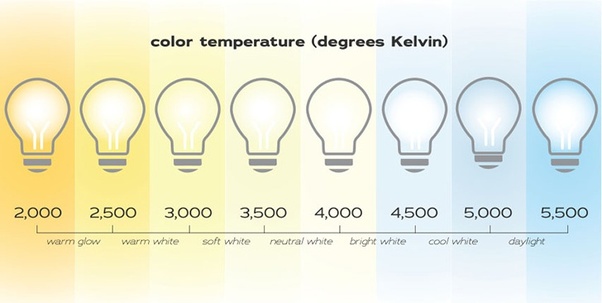COLOR TEMPERATURE OF LIGHT
The Kelvin scale is used to measure the temperature of light, in which the lower the temperature, the warmer the light tone, and the higher the temperature, the cooler or bluer the light source appears. A traditional incandescent bulb falls around the 2300K to 2700K mark, which has amber tones and an overall warm glow, sometimes referred to as “warm white”. These types of color tones work well for accent lighting or areas that call for a softer glow, such as a sconce or small bulbs on a chandelier in a cozy lounge. At the other end of the spectrum, you will find the ultra white lights, sometimes referred to as “daylight”, which are reminiscent of doctors offices and are equal to 5000K-6000K+. These bright, blueish lights are better fit for places like warehouses, garages, and hospitals.
Photo: Work space making use of natural light, ambient lighting, and task lighting.

